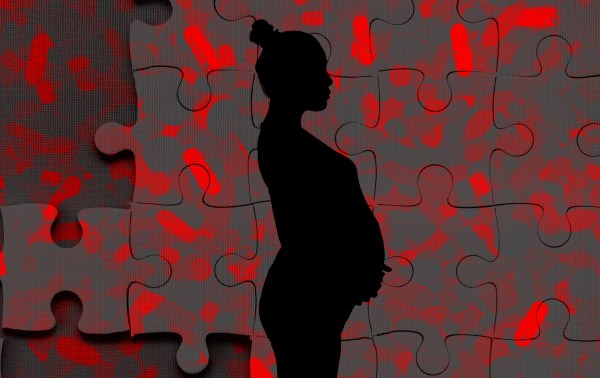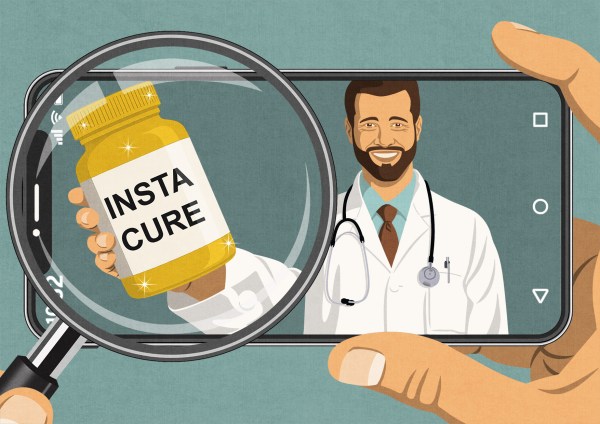Turn any article into a podcast. Upgrade now to start listening.
Premium Members can share articles with friends & family to bypass the paywall.
Last week, I watched President Donald Trump and his health secretary, Robert F. Kennedy Jr., deliver a press conference summarizing their administration’s findings on autism. It was, at turns, an infuriating, bizarre, and laughable display. The ensuing media coverage has focused on their claim that Tylenol use during pregnancy causes autism, an assertion that virtually every medical society has dismissed.
While the Food and Drug Administration’s published announcement on Tylenol was more guarded in citing evidence that suggested an association between acetaminophen and an increased risk of autism, video clips from the press conference spread Trump’s statements far and wide.
Based on the data, it seems clear to me that Tylenol is not causally linked to autism in the best data. But in watching this unfold, I found myself asking a broader question: How did we get here? How did we arrive at a moment when a health claim unsupported by science, and with the potential to affect so many women, is being put forward by government leaders? There’s not a single answer that can explain the phenomenon, but here are a few threads that I believe led us to this place.
Step 1: A crucial, unanswered question.
Over the past several decades, there has been an enormous rise in autism diagnoses—from an estimated 1 in 150 8-year-olds in 2000 to 1 in 31 in 2022. This increase is not in dispute—it has been referred to as an “epidemic,” which isn’t very precise nomenclature, but does capture the exponential growth.
What many people may not be aware of is that data clearly shows that a large share of the increase is due to changes in how doctors define and diagnose autism, a developmental disability marked by brain differences. There is both more screening for autism, because it is now a standard part of pediatric well-visits, and more incentive for screening, because a diagnosis will mean a child will receive, for example, extra resources at school. The changes should be seen as positive: More people are being recognized as being on the autism spectrum and getting needed help.
One result of these diagnosis changes is that the severity of autism among diagnosed individuals has fallen; more people are being identified as autistic who have milder forms of the disorder. Diagnoses have also disproportionately expanded in groups comprising individuals who have been diagnosed less frequently in the past, including girls and children of color.
These diagnostic changes cannot, however, entirely explain the increase. It’s hard to be precise, but my reading of the data suggests that somewhere between 60 percent and 90 percent of the increase in autism diagnoses should be attributed to changes in diagnostic criteria and screening. That leaves at least some true increase in incidence to be explained and understood. This is a genuinely important question, because if some of that increase is due to modifiable factors, either individual or social, we would want to know about it in order to take preventative steps.
Step 2: People want answers.
Kennedy promised earlier this year that, by September, he would present answers on autism—why cases have risen, and what should be done about it—and at least some of the chaos of last week’s press conference can surely be attributed to a desire to hit that self-imposed deadline.
But there is also a deeper issue at play here: Humans are very uncomfortable with uncertainty and chance. We do not like the idea that bad things happen randomly, without reason, or simply due to rotten luck. When something bad happens, we want to know why it happened to the person it did, so we can convince ourselves that it will not happen to us. In the autism context, this makes explanations like “It’s a combination of genetics and poorly understood environmental triggers,” which is what the research actually shows, very unappealing. Had Kennedy presented those findings last week, his supporters—who had been led to believe there was a silver bullet—would have been outraged.
Step 3: A false belief that research could happen faster.
If we started with a genuinely important question about why autism diagnoses have increased, the first misstep in the political arena was to promise a fast solution to the problem, as Kennedy did in April. The problem with the “fast solution” line of thinking, however, is that hundreds of researchers have been looking into these questions for years, and they are, in fact, very difficult to answer.
Even though we know, for example, that diagnostic changes play an important role in the growing number of children with autism, it’s difficult to calculate precisely what percentage of the increase can be attributed to those shifts. Many of the changes in how clinicians diagnose autism spectrum disorders unfold gradually over time, making it challenging to attribute year-to-year growth to a particular diagnostic change.
The other problem is that many other factors that may affect autism rates are also associated, in complicated ways, with the ability to obtain a diagnosis. Some researchers have suggested, for example, that childhood exposure to air pollution may raise the risk of autism. But pollution exposure is already greater for kids who are born into lower-income families, and who also are less likely to have access to a diagnosis than middle or upper-class children. The analysis becomes even more complex when discussing the impact of medical treatments on autism, as regular access to a doctor increases both the likelihood of receiving standard preventative procedures (such as vaccines) and the chance of being diagnosed with autism.
These challenges are not insurmountable, and, interestingly, the National Institutes of Health has recently proposed some approaches to data collection that might help. But the problem isn’t that no one has tried, as at least some people in the Trump administration seem to believe.
Step 4: Confusing correlation and causation.
Taking all of the above into account, the Trump administration found itself stuck. It had promised a fast and easy answer to a very complicated question, and time was running out.
The possibility that using acetaminophen, the active ingredient in Tylenol, during pregnancy is linked with neurodivergence has been around for a long time—I wrote about this as early as 2014—and there is a lot of correlational data on this. However, most existing data is weak in terms of causal claims. The women who take Tylenol differ from those who do not. First, they differ on some demographic features like age and education. More importantly, they differ in the conditions that lead them to take medication. These differences may well drive the link with autism.
Within the last two years, in fact, we have considerably better data suggesting that the links between Tylenol and autism are not causal and, in fact, are driven by these other factors. A very large study in Sweden published in 2024 made a stronger causal analysis based on sibling comparisons and found no link. In August 2025, data from Japan with a similar study design also rejected a link between the painkiller and neurodevelopmental disorders.
However, the existence of the older studies, which showed correlations, presented an opportunity to provide Americans with an actionable answer about the rising incidence of autism. Making this more compelling was a recent summary paper—focusing on the older correlational studies—and one of the authors was highly credentialed: Andrea Baccarelli, the dean of the Harvard School of Public Health. As it turns out, though, he is also a highly paid expert witness in a 2023 class-action suit against the then-maker of Tylenol, which may help explain some of his claims.
In the end, I think this correlational evidence was a convenient and plausible-sounding answer to the autism question, which is why the Trump administration chose to focus on it.
A confounding result.
I’ve heard a lot of parents (moms in particular) react to last week’s press conference. Some were angry; being told to avoid a useful medication by a bunch of men who have never been pregnant doesn’t play well. Some were scared that they had hurt their babies. Many were just confused, especially as the statements from President Trump went much farther, veering into criticizing the childhood vaccine schedule and saying children shouldn’t be given Tylenol, than those from others at the press conference.
When psychiatrist Leo Kanner first identified autism in 1943, he blamed the condition on emotionally cold mothers—another example of humanity’s age-old tendency to blame mothers for anything that goes wrong with their children. Trump telling women to take Tylenol only if they can’t “tough it out” is another version of the same argument women have been hearing about antidepressants, nausea medications, and dozens of other things for years. Maternal behavior is a convenient scapegoat. It’s not that behavior during pregnancy can’t be dangerous for the fetus—heavy drinking, opioid abuse, and certain medications are very damaging. But many things women are told to avoid simply do not fall in this category.
It’s important to examine the motivating factors behind the Trump administration’s announcement about Tylenol and autism, because one obvious response to all the pushback on scientific evidence to the contrary is “Well, if it’s not true, why would they say this?” And this complicated and convoluted backstory is the answer.







Please note that we at The Dispatch hold ourselves, our work, and our commenters to a higher standard than other places on the internet. We welcome comments that foster genuine debate or discussion—including comments critical of us or our work—but responses that include ad hominem attacks on fellow Dispatch members or are intended to stoke fear and anger may be moderated.
With your membership, you only have the ability to comment on The Morning Dispatch articles. Consider upgrading to join the conversation everywhere.